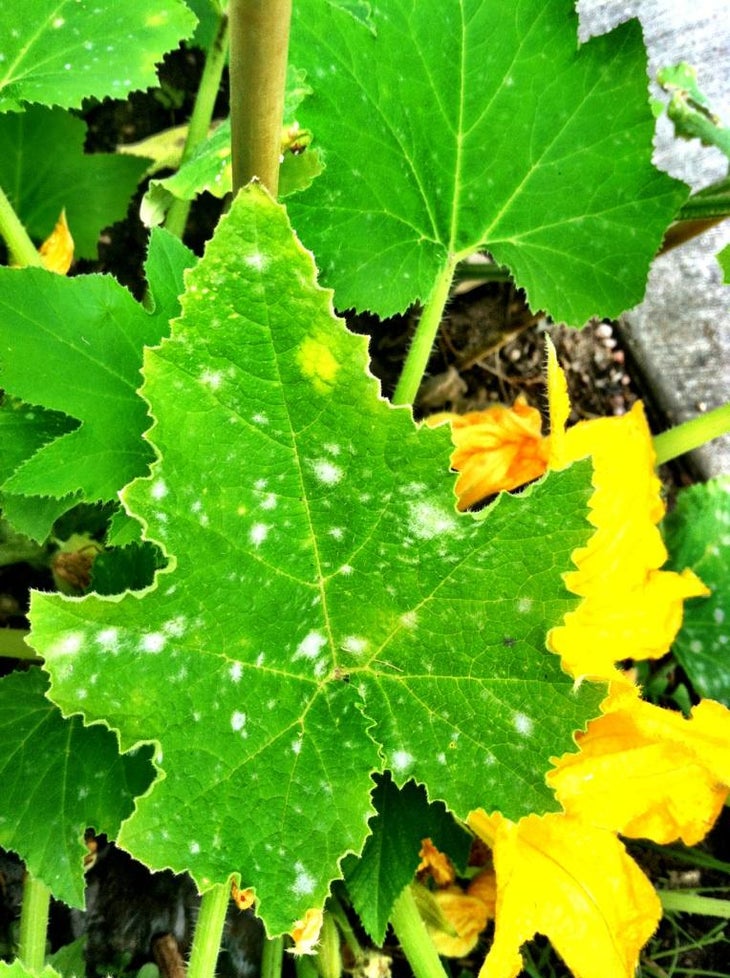Heading out the door? Read this article on the new Outside+ app available now on iOS devices for members! Download the app.

August reliably brings two things to the garden: hot days and powdery mildew. This common fungal disease looks like a silvery powder and it coats the leaves, stems, and fruit of many popular plants. In the vegetable garden it tends to infect members of the squash family, including melons and cucumbers, beans and peppers. Powdery mildew often attacks plants in late summer, when the weather is hot and dry. The spores wait out the winter season in the soil and on plant matter and disperse through the wind.
The disease typically begins as a few spots on a plant’s leaves, but in serious cases it can completely cover the foliage, stems, and fruit. Luckily powdery mildew doesn’t usually kill plants, but it weakens the plants and can dramatically reduce yields and flavor. To prevent the disease, start by choosing varieties that resist powdery mildew, such as Calypso pickling cucumbers, Orient Express slicing cucumbers, Ambrosia cantaloupe, Jack-Be-Little pumpkins, Royal Ace acorn squash, Bush Delicata squash, Wildcat zucchini, and Slenderette beans. For more disease-resistant varieties, check out Cornell University’s Vegetable MD Online.
Powdery mildew is more likely to infect plants that are already stressed out, so be sure to keep your plants well watered and give them plenty of space and sun, as poor air circulation and low light intensity encourages the disease. If you notice a few powdery mildew spots on the leaves of your plants, immediately remove those leaves and dispose of them in the trash. At the first sign of infection you can also try spraying the plants with a baking soda solution, which raises the pH of the leaf surface and creates a hostile environment for the spores. Simply mix 1 tablespoon of baking soda into a gallon of water until dissolved. Spray the solution on the leaves of susceptible plants, being sure to completely coat the surface of each leaf.
Willi Galloway is the author ofGrow Cook Eat: A Food Lover’s Guide to Vegetable Gardening, and she writes about organic vegetable gardening and seasonal cooking on her blog,DigginFood.